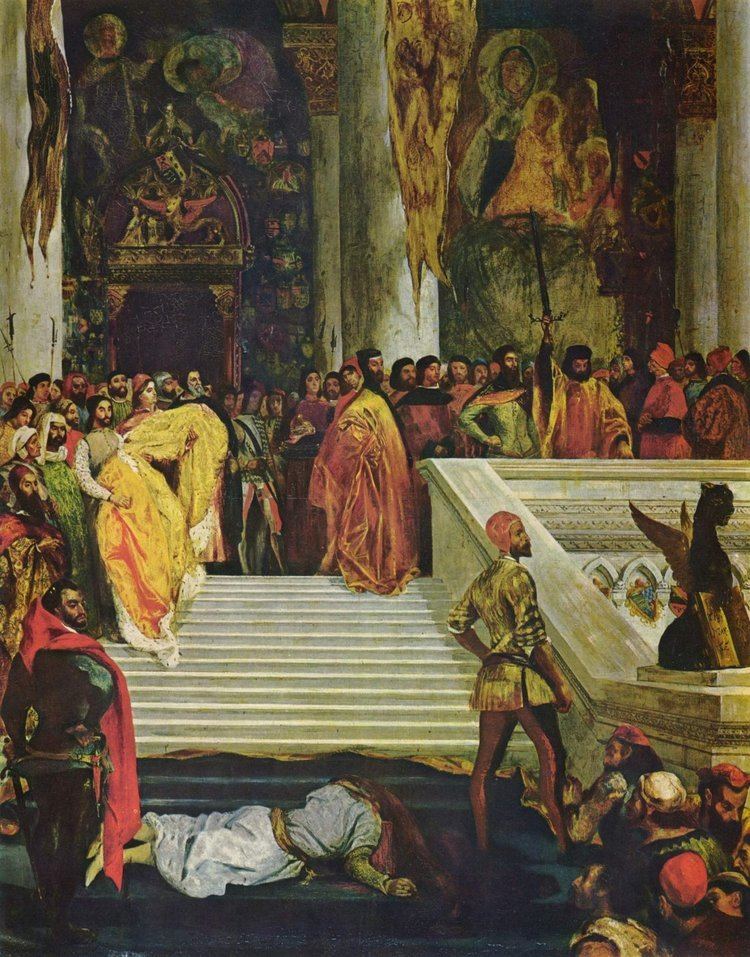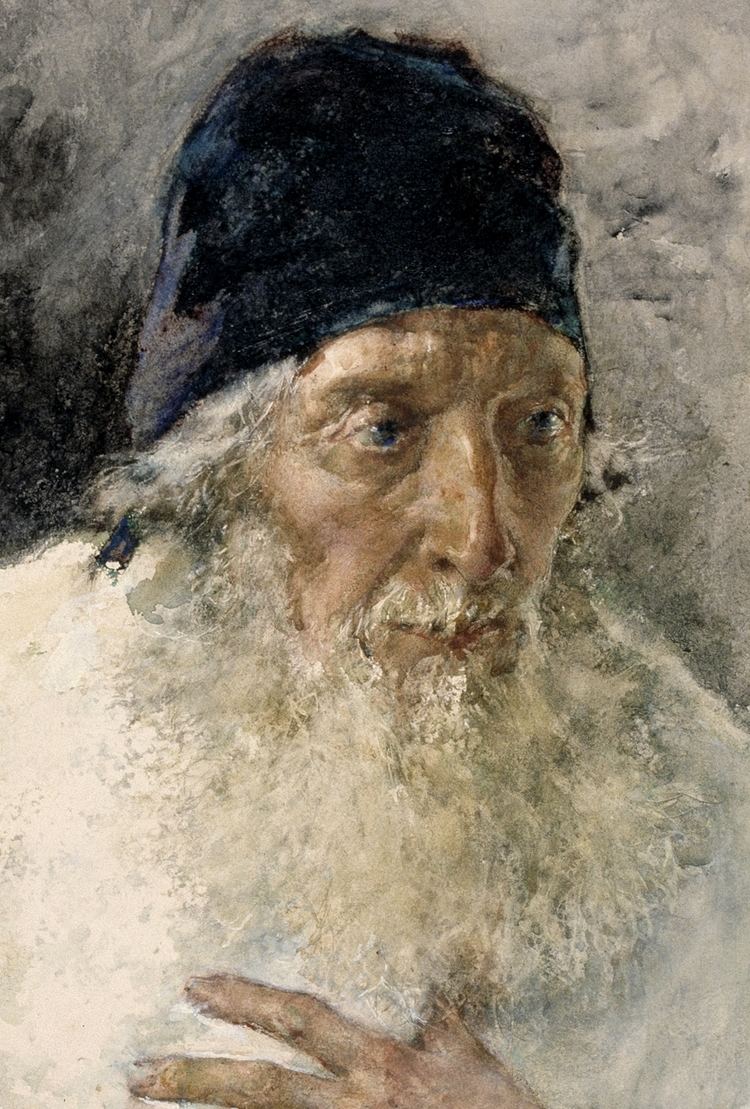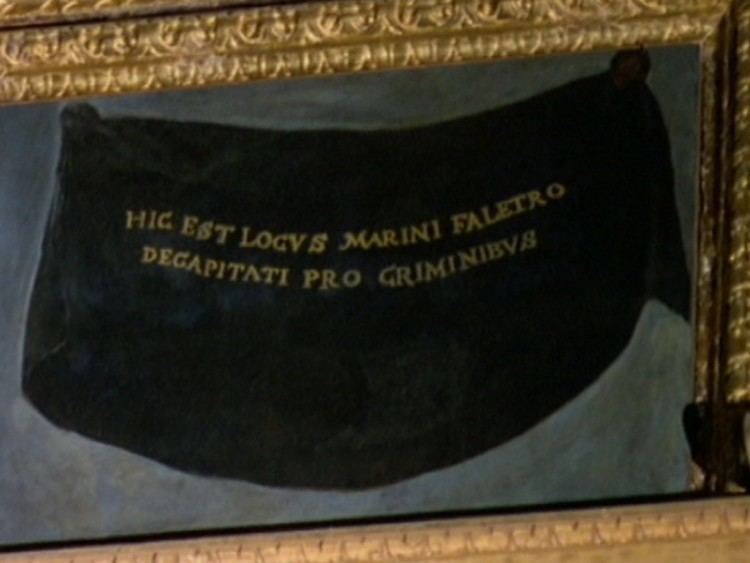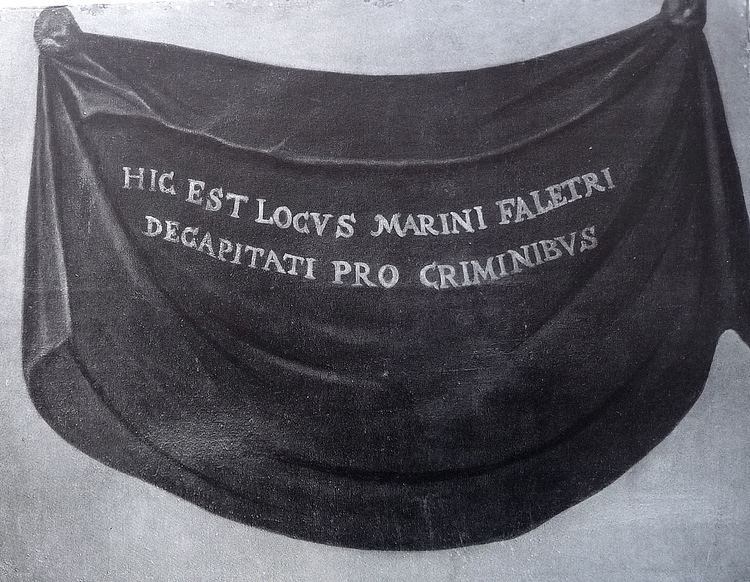Name Marino Faliero | ||
 | ||
Died April 17, 1355, Venice, Italy | ||
Donizetti: Marino Faliero
Marino Faliero (1274 – 17 April 1355) was the 55th Doge of Venice, appointed on 11 September 1354.
Contents
- Donizetti Marino Faliero
- Samuel ramey thomas hampson duet marino faliero gaetano donizetti
- Biography
- Legacy
- References

He was sometimes referred to simply as Marin Falier (Venetian rather than standard Italian) or Falieri. He was executed for attempting a coup d'etat.

Samuel ramey thomas hampson duet marino faliero gaetano donizetti
Biography

Faliero was a naval and military commander and then a diplomat before being elected doge in succession to Andrea Dandolo. The populace of Venice was at that time disenchanted with the ruling aristocrats who were blamed for a recent naval defeat by the fleet of the Republic of Genoa at the 1354 Battle of Portolungo during the Third Venetian–Genoese War. Faliero learned of his election while he was on a diplomatic mission to the papal court at Avignon.

Within months of being elected, Faliero attempted a coup d'etat in April 1355, aiming to take effective power from the ruling aristocrats. According to tradition, this came about because the dogaressa, Faliero's second wife, Aluica Gradenigo, had been insulted by Michele Steno, a member of an aristocratic family, but in a study of doges of Venice Antonella Grignola suggests that Faliero's move was consistent with a prevailing trend in Italian cities to move away from oligarchic government to absolute, dynastic rule.

The plot was badly organised, with poor communication between the conspirators, and was quickly discovered. Faliero pleaded guilty to all charges and was beheaded and his body mutilated. Ten additional ringleaders were hanged on display from the Doge's Palace in St Mark's Square.
Legacy
Faliero was condemned to damnatio memoriae, and accordingly his portrait displayed in the Sala del Maggior Consiglio (Hall of the Great Council) in the Doge's Palace was removed and the space painted over with a black shroud, which can still be seen in the hall today. A Latin language inscription on the painted shroud reads: Hic est locus Marini Faletro decapitati pro criminibus ("This is the space reserved for Marino Faliero, beheaded for his crimes").
The story of Faliero's failed plot was later made into plays by Lord Byron (in 1820) and Casimir Delavigne (in 1829). The latter's version was adapted into an eponymous opera scored by Gaetano Donizetti in 1835. All three present the traditional story that Faliero was acting to defend his wife's honour. Prussian author E. T. A. Hoffmann used a different approach in his 1818 novella Doge and Dogess; German composer Robert Schumann contemplated writing an opera based on Hoffmann's story.
